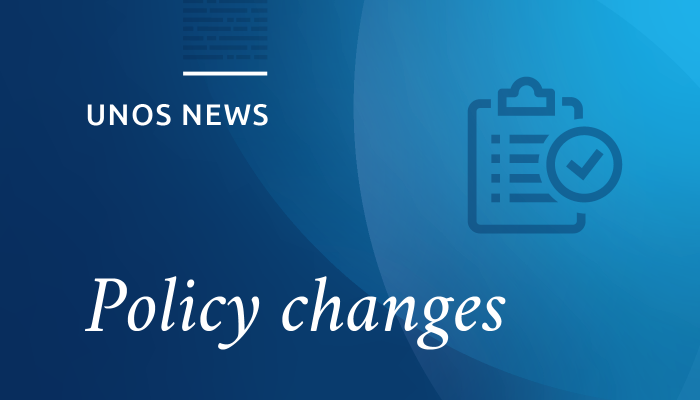Revisions to OPTN liver allocation policy were implemented on October 8, 2015, modifying the maximum value of exception scores for candidates with hepatocellular carcinoma (HCC) and the timing of exception scores assigned to HCC candidates.
The revised policy, approved by the OPTN/UNOS Board of Directors in November 2014, is intended to create a better balance in transplant opportunities between candidates with HCC exceptions and those with allocation priority based on their calculated MELD/PELD score. It will not change the data fields required to support the application for an exception score.
The maximum HCC exception score will be capped at 34 for any candidates with an exception application submitted on or after October 8. If a candidate has an accumulated HCC exception score of 35 or higher at the time the new policy is implemented, their exception score will be reset to 34 for the duration of their time with an HCC exception as long as they continue to meet criteria. Candidates may be referred to the Regional Review Board (RRB) if they demonstrate the need for higher priority.
The revised policy also establishes a new timetable that delays assignment of new or extended HCC exception scores. For any new HCC exception applications submitted on or after October 8, candidates must be registered at their calculated MELD or PELD scores for the first three months (initial application) and for the first three-month extension, as long as the candidate continues to meet the policy criteria. At six months (second extension), MELD candidates will receive a score of 28, and PELD candidates will receive a score of 34.
In addition, as of October 8, liver transplant programs can access a new report in the WaitlistSM application to identify MELD/PELD exception forms that are due for extension. This report will help programs manage their forms in a timely way.
For the wording of the revised policy and additional information about the rationale for the policy, read the December 2014 policy notice.

